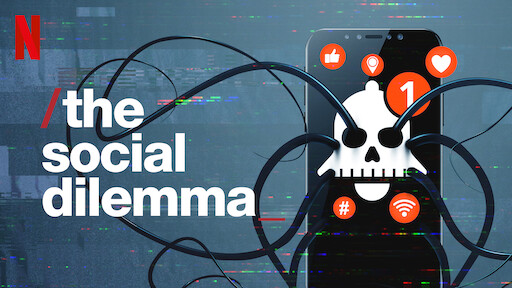
Shavonne McLamb
Contributing Writer
“The Social Dilemma” is an hour and 34 minute documentary on the way social media affects people.
As former employees of social media platforms skirm in their chairs, they nervously recall which company they worked for, and why they left.
“When I was there, I always felt that fundamentally it was a force for good. I don’t know if I feel that way anymore,” said Alex Roetter, former Senior Vice President of Engineering at Twitter.
Many employees had a difficult time exposing the problem with social media.
The documentary opens up with a simultaneous newsreel and actors portraying a family getting ready for dinner.
The newsreel showcases stories from the past few years on how social media needs to change due to depression, hacks and misinformation.
Tristan Harris, former Design Ethicist for Google and current co-founder of Center for Humane Technology, is preparing for a lecture on the tech industry.
Harris is calling for social media to become less addicting.
He admitted to being addicted to his email and wondered why he and the team were trying to make Gmail less addicting.
Harris decided to make a presentation to discuss this matter.
The presentation revealed that 50 white men in California are helping people make decisions and thought processes that they would not have had if they did not have Gmail and notifications. After he sent it to his colleagues, it slowly grew around the company, but nothing happened.
“If you’re not paying for the product, then you are the product,” Harris said.
This documentary opens your eyes as to what goes on with social media companies.
Advertisers are the customers, while the social media users are being sold to the advertisers.
The companies are competing for our attention and need our engagement. Advertisers pay these companies to show their ads to us.
“It is the gradual, slight, imperceptible change in your own behavior and perception that is the product,” said Jaron Lanier.
In order to sell to advertisers, companies need a lot of data.
In order to get this data, everything people do on the internet is being watched.
For many of the companies, there are three main goals: engagement, growth, and advertising.
The engagement is to keep you interested, the growth is to keep you sharing and coming back and the advertising is to make sure they make enough money as possible.
How do they know what to sell to advertisers? Psychology of persuasion.
Everytime a person refreshes their page, they have something different on their device.
That’s called a Positive Intermittent Reinforcement.
In order to get more growth, there are a group of engineers to hack your psychology. This is called growth hacking.
How is it affecting the youth?
There has been an increase in depression, self harm, and suicide since 2011.
The actors are back and showcases how one post affected a young girl and how depressed she is becoming.
What you see on your news feed or search engine depends on where you live. People see different things because of algorithms.
Fake news trends on Twitter faster than real news. It is easy to spread propaganda through these social media platforms.
In Myanmar, hate speech spread through Facebook, which took over violence and persecution.
Social media impacted politics throughout the world.
Commentators’ solution to social media platforms are to change the business models for companies and corporations and to add rules, regulations and laws to protect society.
In the meantime, other solutions they recommend are deleting certain apps, turning off notifications and always searching for YouTube videos, not clicking the recommendations.
Email Shavonne at:
smclamb@live.esu.edu

